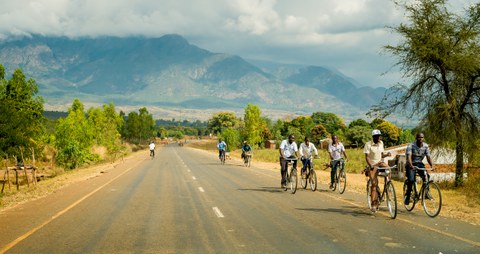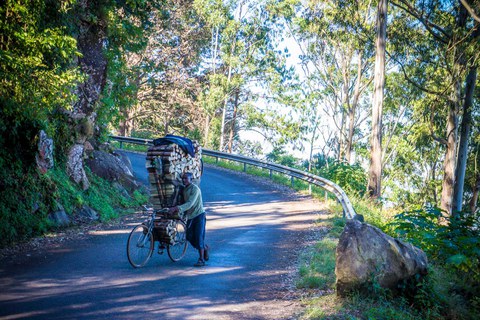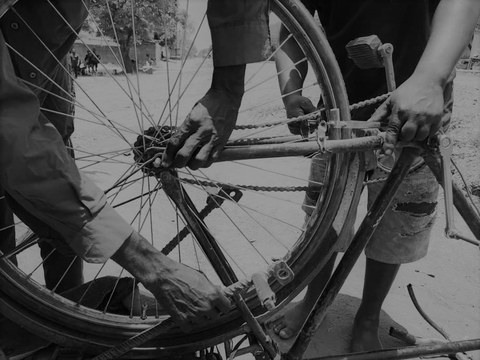Cycling Cities: The African Experience
In a research project on the social history of the bicycle in Malawi's urban Zomba, David Drengk is investigating the changing social perception and use of the bicycle in the 20th century. The project is part of the larger research network "Cycling Cities: The African Experience", which is led by Njogu Morgan (Wits University, Johannesburg, South Africa/University of London College), Yusuf Madugu (Bayero University, Kano, Nigeria), and Ruth Oldenziel (TU Eindhoven). The project is working towards the publication of an anthology, based on a previous project entitled "Cycling Cities: The European Experience". In addition to Zomba, 14 other African cities are currently part of the project, including Aba (Nigeria), Bamako (Mali), Cairo (Egypt), Cape Town (South Africa), Chipata (Zambia), Dar es Salaam (Tanzania), Douala (Cameroon), Kampala (Uganda), Kano (Nigeria), Kisumu (Kenya), Machakos (Kenya), Maputo (Mozambique), Mzuzu (Malawi) and Tamale (Ghana).

Alltagsszene in Zomba. Wie kam es dazu, dass Fahrradfahren derart in den Alltag der Bevölkerung Zombas integriert wurde?
The social history of the bicycle in Zomba, 1890 - 2020 (tentative title)
The history of cycling in Malawi - and in Zomba - is closely intertwined with the history of British colonialism in Africa. Initially, it was mainly European colonial officials, merchants and missionaries who used bicycles, which were introduced to British Central Africa - known as the British Protectorate of Nyasaland since 1907 - in 1895. Within the Malawian population, however, bicycles were rarely used at this time; many moved around on foot instead. The comparatively small number of Malawian cyclists worked in the colonial administration or were active in European sports clubs. After all, bicycles were considered luxury goods at the beginning of the 20th century and were mainly used for travel, sport and colonial administrative tasks by the aforementioned stakeholders.
However, the European colonial bicycle culture began to diversify as a growing Malawian elite began to buy bicycles. The same was true for migrant workers who earned comparatively high wages on plantations and in mines in Southern Rhodesia and South Africa (McCracken, 2011). Among many of the returning migrant workers, the bicycle was considered a prestigious consumer good, the purchase of which ultimately symbolized financial and social success and advancement. Before returning to their hometowns, these workers often bought bicycles to bring home, along with a variety of other items. Nevertheless, under colonial influence, the bicycle remained a means of transportation for a privileged social class.
This changed in the 1940s as more and more Malawians began to integrate the bicycle into their daily lives and habits. While 26,000 pounds worth of bicycles were imported into Nyasaland in 1945, eight years later imports increased twelvefold (Irvine 1959, 170). The bicycle subsequently became increasingly popular in Malawi and especially in Zomba. This ultimately also changed the urban population's attitude towards cycling.

Insbesondere im städtischen Transportwesen wie dem Transport von Holz gewann das Fahrrad in der zweiten Hälfte des 20. Jahrhunderts an Bedeutung.
Today, Zomba residents largely rely on bicycles as their main means of transportation to get around, travel to work, visit friends and family, shop and transport goods. Pedicabs are a widespread phenomenon. In recent years, the City Council has also recognized that Zomba's urban planning and transport system cannot avoid recognizing the bicycle as an important part of everyday urban public life.
Traffic counts at various locations in the city, for example, have shown that bicycles are by far the most used mode of transportation in Zomba - even ahead of the much-cited minibuses or motorcycles (Zomba City Council, "Zomba Urban Profile 2017-2022," p. 113.). It is therefore impossible to imagine urban Zomba without the bicycle.

Fahrradreparatur ist ein omnipräsentes Thema in der gesamten Stadt.
The countless mobile and immobile bicycle repair shops that can be found throughout the city bear witness to the integral importance of the bicycle in Zomba's urban cityscape. The sub-project on Zomba therefore deals with the question of how the perception of the bicycle has changed noticeably, both socially and politically, over the last 100 years.